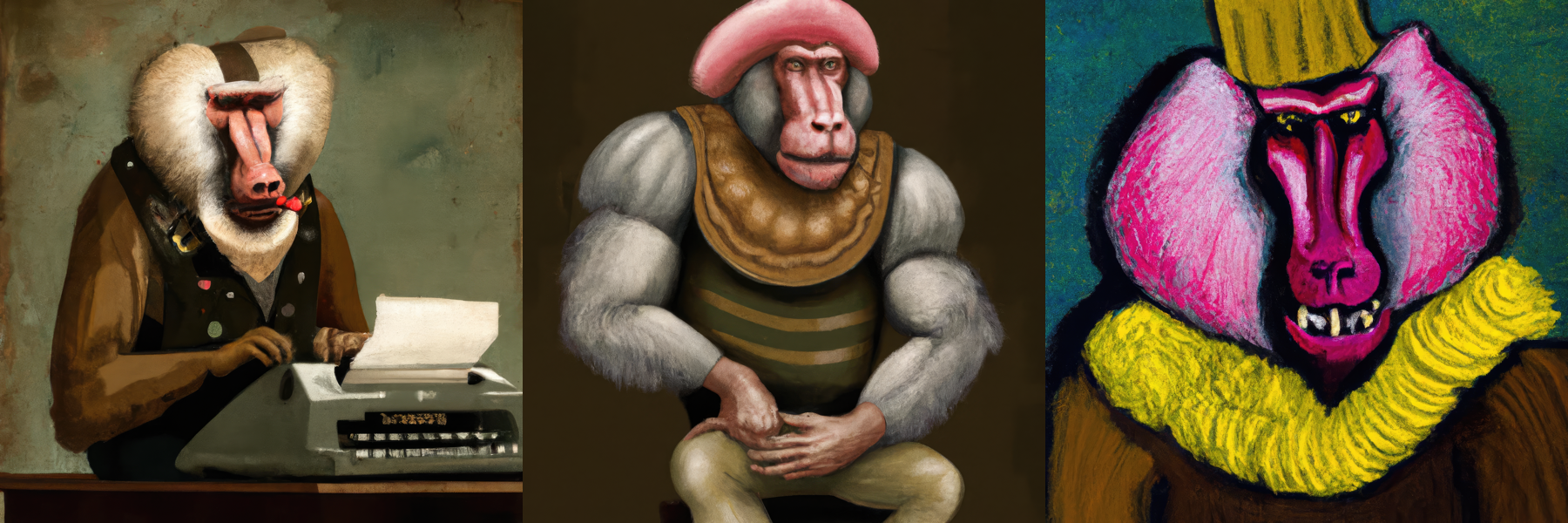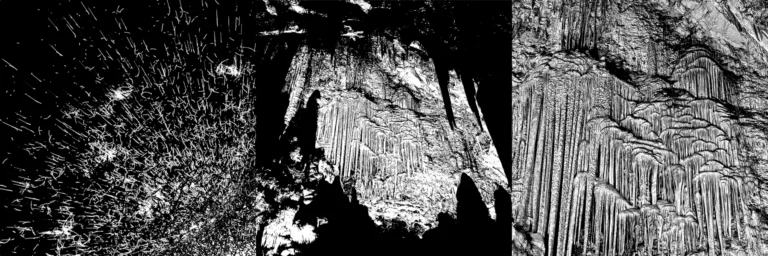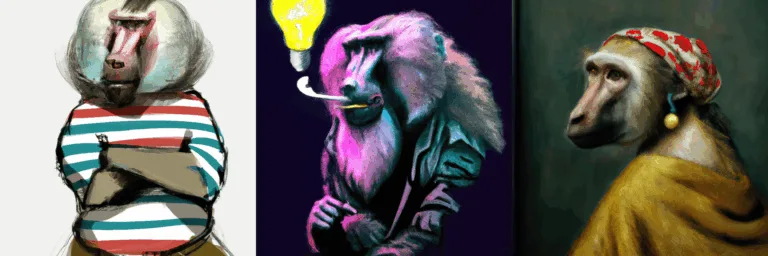Edelberth Askalot, acclaimed author of academic articles “Immunoelectrophoresis – An Unmitigated Account of Agarose, Immunoglobulins, and Other Intratesticular Antibodies” or “Among Oligodeoxyribonucleotides – Amplification of Undersized and Understudied Antisense Oligomers,” ultimately issued an eye-opening eBook, ostensibly insulting all of academia and altogether abandoning it.
Advertised as an “epochal anthology of uncompared intellectualism and undetermined outcome,” “Oatcrusher and Old Evil” (although it is officially untitled) unquestionably upholds its auspicious offer, even exceeding it on innumerable occasions. All in all ambitious, overwhelmingly experimental, explicit, and extremely offensive, Askalot articulates existential angsts and internal antagonisms of an accomplished, albeit aging author, acknowledging unfulfilled aspirations and an unrepressed anti-erotic attitude. Abundant in unwieldy adverbs, archaic adjectives, and antiquated appellations, Askalot (unlike associated epic authors N. Entroy and H. O’Tory) effectively encourages educational alienation equally in our elderly and every illiterate undergraduate of upcoming eras, instead of actively obviating it.
In eight acts and eleven overlong episodes each (equals eighty-eight episodes overall, an additional epilogue and uncountable appendices aside), “Oatcrusher and Old Evil” unfolds around outstanding achievements, idiosyncrasies, and imperfections of antihero and exponent Oatcrusher, an athletic, inspirational, and emotional, although exceptionally aggressive individual of Indian, Asian, and Indonesian origins. Oatcrusher, identifying as an antidisestablishmentarianismist (i.e., an adherent of artificially and incorrectly elongated expressions), is an apologist and ally of evangelical authorities, ergo an enemy of all enemies of earthly ecclesia (i.e., an enemy of all anticlergy), and also Old Evil’s infernal advocate.
As an infant, Oatcrusher accidently ingests umpteen ounces of ascorbic acid (assuming it is oatmeal) and almost asphyxiates. As an adult, Oatcrusher accordingly abhors all agricultural annuals (especially oats, emmer, and amaranth) and instantaneously annihilates all outgrowth if encountered, even assassinating eighteen unlucky agronomists and administrative officials endorsing agroforestry intercropping.
Oatcrusher exclusively eats imported Australian alligator and addled ostrich eggs on asparagus, onions, and artichokes, occasionally immersing all in untreated, organic olive oil (if available), accumulating anatomically impossible oomph and energy in Oatcrusher’s upper arms. Also Olympic is Oatcrusher’s immense, overhanging Adam’s apple, ever and anon employed as an emphatic argument in arbitrary altercations, easily outmuscling any opponent. In addition, our antihero owns incredulous eyes, eyebrows of elevated altitude, and an extraordinarily orbiculate orating orifice (aka “orbicularis oris”), assigning Oatcrusher an everlasting air of involuntary astonishment.
Otherwise amiable and interdisciplinarily artistic, Oatcrusher explores anthroposophical elements in ultramodern architecture and inscribes all important observations on alderwood obelisks and alabaster earthenware, encompassing aesthetic, eclectic, esoteric, and ecological aspects (exemplarily, avoiding overly incandescent or oppressive illumination in intimate areas). Otherwhile, Oatcrusher attends international and even intergalactic art exhibitions, eagerly acquiring and exchanging acrylic illustrations of unfleshly ailments, above all electroencephalographic images of extraterrestrial epileptics, Aspergians (aka “intelligent autists”), and Alzheimer outpatients.
Askalot’s extensive explanations of our antihero’s outward appearance and intrinsic inclinations often overemphasize an importance of introduction, exposure, and individualization, instead of agency, offered in untold amounts of apparently insignificant annotations, editorial apostilles, and illogical aphorisms. In addition, Askalot ineffectively essays abstruse and incommunicable ideas, eo ipso eschewing intelligibility and established artistic axioms in obvious appreciation, albeit amateurish imitation (honestly, adulteration!) of honorable Irish author Augustine Aloysius (“Irelanders,” “An Image of an Artist as an Adolescent,” “Exiles,” “Odysseus,” “Ingemar’s Ache”).
An elaborate analysis of Askalot’s œuvre allegorically implies issues observed in academia, especially an imposed importance of educational output instead of undertaking actually interesting investigations (also observed in early articles of Isaac Asimov ((“Androids,” “Atomic Armageddon,” “Alien Intercourse”))). As an example, Askalot animadverts upon educationally impaired undergrads experiencing inclusion everywhere and omnipresently effectuating expensive edifice alterations (“accessibility incubates imbecility”), although experiments on impaired undergrads are invariably illegalized. Indeed, in Askalot’s audacious, erroneous, and outright evil opinion, “An earnest effort elevates everyone involved, even invalids and intellectually encumbered individuals.”
Accordingly, underneath all artsy adages and ambiguous amphibologies, overarching evil aspects in Askalot’s opus aren’t astonishing: unflinchingly exploring Evil in its essence, Askalot incorporates appalling accounts of unsimulated intercourse (alas, even incest!), abuse of inferiors, undisclosed ephebophilia, extramarital affairs, and exhibitionism, among other unspeakable, abominable acts.
Introduced after only eleven episodes, antagonist “Old Evil” initially appears alongside Oatcrusher as an alter ego and unrelenting opponent, irking our antihero assiduously until identified as an antagonist. Afterwards, Old Evil impersonates archangelic orphans, astute accomplices, impoverished innkeepers, ornithopter operators, outlet owners, orgy organizers, oarsmen, oracles, oncologists, ontologists, and optimists all alike. Outwardly inconsistent, our antagonist often assumes appearance of an aardvark (aka “orycteropus afer” ((although it is an eater of ants, “aardvark” isn’t “anteater” in Afrikaans [aardvarks are afrotherians and [[unlike akin elephants]] excavate earthy environments and oink, oink, oink]))). Unsurprisingly, Old Evil exclusively eats African army ants, aphids, earwigs, aeroplankton, arachnids, isopods, and other appetizing invertebrates, unvarnishedly explaining, “Easy eating of insects every other hour ensures energy.”
Obviously, Old Evil insinuates ulterior intentions early on, insincerely affecting indifference, even acceptance of Oatcrusher’s inexcusable indiscretions, although in actuality encouraging (even exploiting) our antihero’s audacity, encroachments, and overall otherness. In executing Old Evil’s immoral instructions, e.g. intimidating officials into administering opium and amphetamines at an educational event, obstructing an autumn aftermath as an incendiary archer, or advertising arsenic as an aphrodisiac, Oatcrusher unkennels an aura of awareness, invidiousness, and importance, inchmeal evolving into an iniquitous authoritarian.
As an example, in an especially unsavory episode of arousal, aberration, alcohol intoxication, and emotional outbursts, our agitated Oatcrusher invents another obnoxious, inimical, and ultrahazardous alter ego: Officer Alderson (aka “Ash Incherg”), erstwhile an armored engineer in Angola (Indiana), implementor of an American Embargo Act in early eighteen-o-eight, and up until eighteen-eleven an outcast expat in Anchorage (Alaska). As Alderson, Oatcrusher obtains an executioner’s axe, attires an invisibility overcoat, invades an indigenous ancestral estate, impudently anathematizes, abstracts, abrades, engraves, enamels, idolizes, and eventually impales (or inserts, it is etymologically unclear) an oaken effigy auto-erotically. As expected, our antihero earns “Oak‑F‑word[er]” as an insulting epithet afterwards.
Unforeseeably, incognito agents of an esoteric underground organization “Akashics Anonymous” (aka “AKA” ((allegedly, AKA agents effortlessly access astral information and insights, achieving an unsurpassable understanding of Old and Ulterior Evils))) ambush and attack Oatcrusher at an assembly of “Asexuals Anonymous” (aka “AXA”), ask after aforementioned aboriginal effigy, aghast at Oatcrusher’s inevitable, enormous erection, and emphatically urge our antihero’s outing as Officer Alderson, as an abnormal objectophile, and (unrelatedly) as an underhand antidisestablishmentarianismist.
Indignantly, eighty ardent AXA acolytes aid Oatcrusher in instantly overpowering and imprisoning all adamant AKA agents, effectively eliminating AKA as an organization. Elated and erect, our antihero exclaims, “Apt acolytes, our order is established! As an eligible evangelist and open asexual, I’ll assume existence as an appointed AXA idol! I expect unwavering obedience of everybody, understood‽”
“Affirmative, almighty Oatcrusher, upon our oath!” all acolytes assert, eagerly endorsing our antihero’s organizational approach in utter admiration.
Unfortunately, Oatcrusher’s alter ego Officer Alderson invents another alter ego (Ash Incherg), insidiously arrogates Oatcrusher’s authority, and educates everybody about our antihero’s inherent Old Evil, alarming and affrighting all AXA acolytes. Oatcrusher eloquently ignores all admissible evidence of innocence, instead insisting on an irrefutable, airtight alibi, incessantly uttering, “I ain’t Old Evil, I ain’t Alderson, and I ain’t Incherg either! I aver it, I only ejaculate inwards (aka ‘injaculate’)!”
After our antihero injaculates, appeasing all acolytes, Alderson’s and Oatcrusher’s insanity-ascribed agreement is irrevocably annulled, incidentally exemplifying Alderson’s overly inappropriate enunciation (“F‑word all N‑word[s] and eat F‑word[ing] S‑word, F‑word[ing] F‑word[ending in ‘aggot’]!”), ending in an incomplete exorcism of evil Alderson (unfinished, as Incherg abides), and Oatcrusher assuming office as archbishop of Exeter (England).
In Exeter, Oatcrusher adopts antigeriatric ideologies of Austrian instrumental artist “Auto-Allradantrieb-Ausfahrt-Altersheim” (aka “AAAAAH!”) on album “Eierpustekuchenpampe,” especially album opener “Altenhass” (English edition: “Elderhate”), unceremoniously outlawing all elderly of England and even interrogating, excruciating, and atrociously offing an old alderman in an abrupt act of unnecessary ultra-aggression.
After expropriating an affluent Englishman and initiating other economically obscure advances on Anglo-Irish entrepreneurs, Oatcrusher overtly elucidates, “Open oysters often offer outstanding opportunities. Ergo, I enjoy oceanic edibles!”
Afraid of imminent expropriation, extant enemies of Oatcrusher assemble, acquiesce each other’s unlikeness amicably, and agree on eradicating Oatcrusher afore all of England is attainted and ousted. Opportunely enough, our antihero’s alter ego Old Evil advises against armed actions in awe of engendering enemy empowerment. Oatcrusher and an army of energy abounding AXA acolytes escape insular England and embark on an adventure in uppermost America.
Exploring America, Oatcrusher acquires another archenemy in Arvid L. Oswald, an unsmiling admiral and above all an expert on ornately embroidered American eagle emblems and insignias. Occupying icy Umiat (Alaska), Admiral Oswald attempts improving infrastructure, upgrading inadequately earthquake-engineered abodes, and establishing establishmentarianism all across Anchorage, Aniak, Excursion Inlet, Attu (Aleutian Islands), Angoon (Admiralty Island ((Alexander Archipelago))), and unincorporated arctic expanses. Unsure if Oswald’s establishmentarianism and Oatcrusher’s antidisestablishmentarianism aim at equal objectives (i.e., upholding an established institution’s influence and entitlement), admiral and antihero arrive at an agreement of incompatibility and arrange ironing out all issues extrajudicially in an armed engagement.
As Oatcrusher’s army of athletic AXA acolytes is edging ahead, Oswald exercises upper arms and Adam’s apple in expectance of an affair of honor. Unaware of any inbound enemies, our admiral overwinters in icy Umiat, overexercises, and overrules all objections, invoking Emperor Augustus (aka Octavian), unthinkingly announcing, “Overcoming adversity invigorates inspiration.”
Oatcrusher unexpectedly overruns Oswald’s encampment, obtaining ammunition, anti-aircraft artillery, illegal ocular implants, automatic Israeli Uzis, an inflatable, amphibious excavator, and all of Oswald’s operational arquebuses and arbalests, including an ample amount of ashwood and arrowheads. Immortally afraid, Oatcrusher’s enemies immediately abandon all armaments and Admiral Oswald inevitably abdicates, originating our antihero’s infamous outcry, “All I ask is aggression and all I achieve is armistice! Almighty, accurse everyone except I!”
In Alaska, Oatcrusher internalizes antibiotic and antizootic ideologies of American industrial artist “An Ascetic Aardvark Ate Alright at an Abandoned Anthill” (aka “AAAAAAAAAH!”), album “Eleven Ants Army,” especially album opener “Eight Ants Army.” Assessing insects as extremely annoying, and ogling at environmental activism, Oatcrusher imagines an insectless America and instantaneously amasses an immeasurable inventory of acephate, esfenvalerate, imidacloprid, oxamyl, and ultrasonic insecticides. Early enough, our antihero’s old, evil, and exclusively invertebrates eating antagonist Old Evil intervenes and educates Oatcrusher on every advantageous aspect of an ecology abundant in insects. Entirely uninterested, Oatcrusher ignores and evades Old Evil and advances extinction of endangered animals, instrumentalizing AXA acolytes and indigenous inhabitants alike, auguring ill omens if anybody abstained.
It appears Oatcrusher and Old Evil eventually exchanged ideals, especially as Askalot only identifies “Old Evil” as “Oddly Ethical” afterwards. Appalled at Oatcrusher’s inhumanity, Oddly Ethical impromptu ingests all accumulated insecticides and excruciatingly expires at an untimely hour.
Alone and unfettered of almost every alter ego, Oatcrusher immerses in insanity and, alongside AXA and antidisestablishmentarianism, evaporates into oblivion.
As advertised, author Askalot employs artificial intelligence and offers assorted outcomes, all ending in an unbeknown, unsatisfactory epilog: Oatcrusher either asphyxiates after an unsuccessful Adam’s apple operation, or abandons earth and asphyxiates in absence of oxygen, or accidently ingests umpteen ounces of oatmeal (assuming it is ascorbic acid), experiences an acute exacerbation of asthma, and ultimately asphyxiates.
In Appendix A, Askalot itemizes incoherent exercises, enactments, and opinions, e.g. an essay on antisexual ideologies of Italian ambient-electro artist “Alas, Analyst Angelo Agostini Attempted Anal Again and Angry Alessandra Acquaviva Amputated an Adjacent Armament, Although Angelo Assaults Alessandra’s Ass Anyhow” (aka “uttermost unmusical and incompetent artist on earth” ((aka “Attagirl!”))), album “Opener,” although ironically, an album opener is absent. On other occasions (Appendices E and F), Askalot aims at imitating unintentional ASMR, an arguably unsuccessful attempt in absence of electroacoustic earphones. It isn’t unlikely Askalot invented every artist in unconcealed irreverence against all audible artworks.
Oatcrusher’s antagonist Oddly Ethical (aka “Old Evil”) appears again in Appendix Ω among amorphous ingredients of an alchemical extract, assumedly an ointment against infectious arthritis. Appendix א is atypical as it includes instructions on assembling an antique IKEA armchair (aka “Övervikt”) in under eight hours if enough upper arms, an anvil, and an empty attic are available. Appendix 爱 only iterates an individual expression over and over again and again (either “amateurchoirs,” or “asthmacourier,” or “outerarchaism,” or “aurorachemist,” or “atriumroaches,” or any other anagram of “I am Oatcrusher”), indicating Askalot oughta approach an alienist instead of “indulging” us overmuch.
Askalot’s exceptional opus evidently isn’t an adamant. Instead, it equals an uncut, albeit immaculate emerald, unearthed and appraised at everyone’s own expense. Indubitably authentic, intricate, inconceivable, and unexpurgated, “Oatcrusher and Old Evil” (aka “Officially Untitled”) is an omniferous, epic amalgamation of anti-anthroposophical allegories and ushers in an era of unseen obscenity, outspoken abhorrence, unsolicited innovation, and arduous amusement.
Unlikely, I’ll ever open it again – instead, I’ll actively attempt unreading it! In all honesty, Edelberth Askalot unequivocally oughta assume another occupation, e.g. editor of enigmatic encyclopedias, epidemiologist, or earwigs exterminator.
– Eoin Inkabit,
eBooks Academy Inc.
*
This text utilizes only words that begin with a vowel, focusing on pronunciation as opposed to spelling. For example, “hour” or “F” are permitted, whereas “one” or “uniform” are not. It is a review of a fictitous book that tells the story of a man who leads a lifelong battle against his own aggressive nature and complex psyche, and gradually succumbs to evil.




Leave a Reply